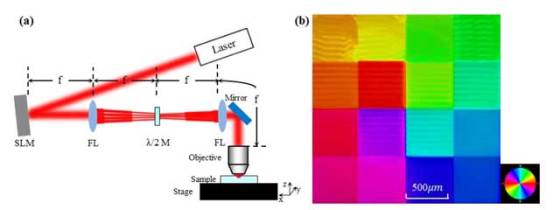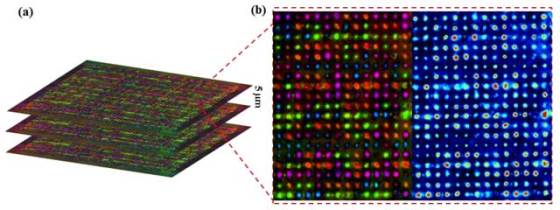5D optical memory in nanostructured quartz glass
 Using nanostructured glass, researchers at the University of Southampton have experimentally demonstrated the recording and retrieval processes of five dimensional digital data by femtosecond laser writing. Dubbed as the ‘Superman’ memory crystal’, since the glass memory has been compared to the “memory crystals” used in the Superman movies, a disc can store 360 TB of data, while having thermal stability up to 1000°C (1832°F) and practically unlimited lifetime.
Using nanostructured glass, researchers at the University of Southampton have experimentally demonstrated the recording and retrieval processes of five dimensional digital data by femtosecond laser writing. Dubbed as the ‘Superman’ memory crystal’, since the glass memory has been compared to the “memory crystals” used in the Superman movies, a disc can store 360 TB of data, while having thermal stability up to 1000°C (1832°F) and practically unlimited lifetime.
The research is led by Jingyu Zhang at the University’s Optoelectronics Research Centre (ORC) and conducted under a joint project with Eindhoven University of Technology in the framework of EU project Femtoprint.
The researchers recorded data via self-assembled nanostructures created in fused quartz, and researchers claim it can store vast quantities of data for over a million years. The information encoding is realized in five dimensions: the size and orientation in addition to the three dimensional position of these nanostructures.
The data recording was significantly simplified by replacing the conventional control of the writing beam energy and polarization with a spatial light modulator and a specially designed laser imprinted half-wave plate matrix.
The self-assembled nanostructures change the way light travels through glass, modifying polarization of light that can then be read by combination of an optical microscope and a polarizer, similar to that found in Polaroid sunglasses.
A 300 kb digital copy of a text file was successfully recorded in 5D using ultrafast laser, producing extremely short and intense pulses of light. The file is written in three layers of nanostructured dots separated by five micrometers.
“We are developing a very stable and safe form of portable memory using glass, which could be highly useful for organizations with big archives. At the moment companies have to back up their archives every five to ten years because hard-drive memory has a relatively short lifespan”, said Zhang. “Museums who want to preserve information or places like the national archives where they have huge numbers of documents, would really benefit.”
The team is looking for industry partners to commercialize their technology which could be used to archive our knowledge and history.
For more information, you can read the paper presented at the Conference on Lasers and Electro-Optics (CLEO’13): “5D Data Storage by Ultrafast Laser Nanostructuring in Glass”.











This is downright epic.
I guess the speeds aren’t that impressive but its potential is much greater compared to other currently feasible technologies.